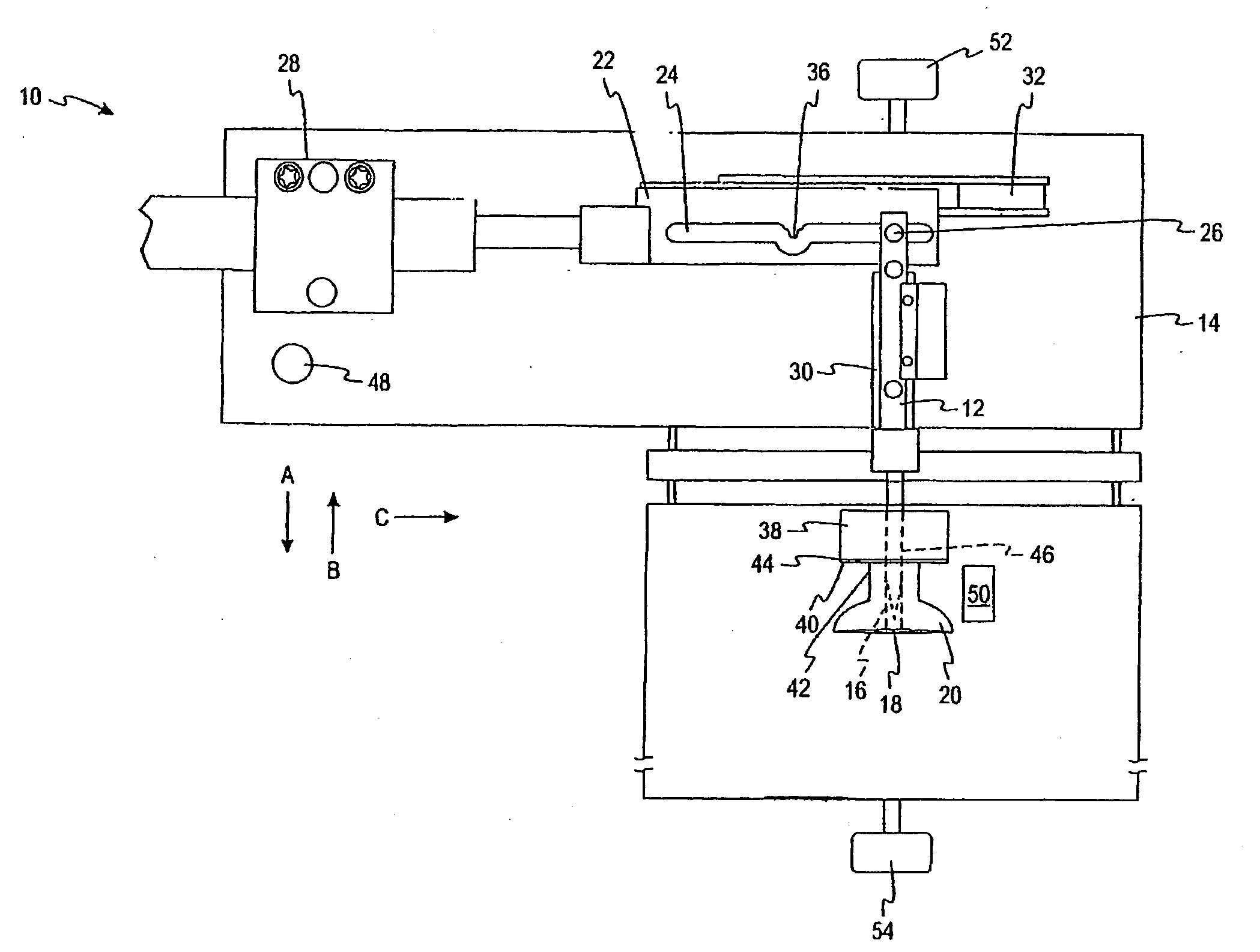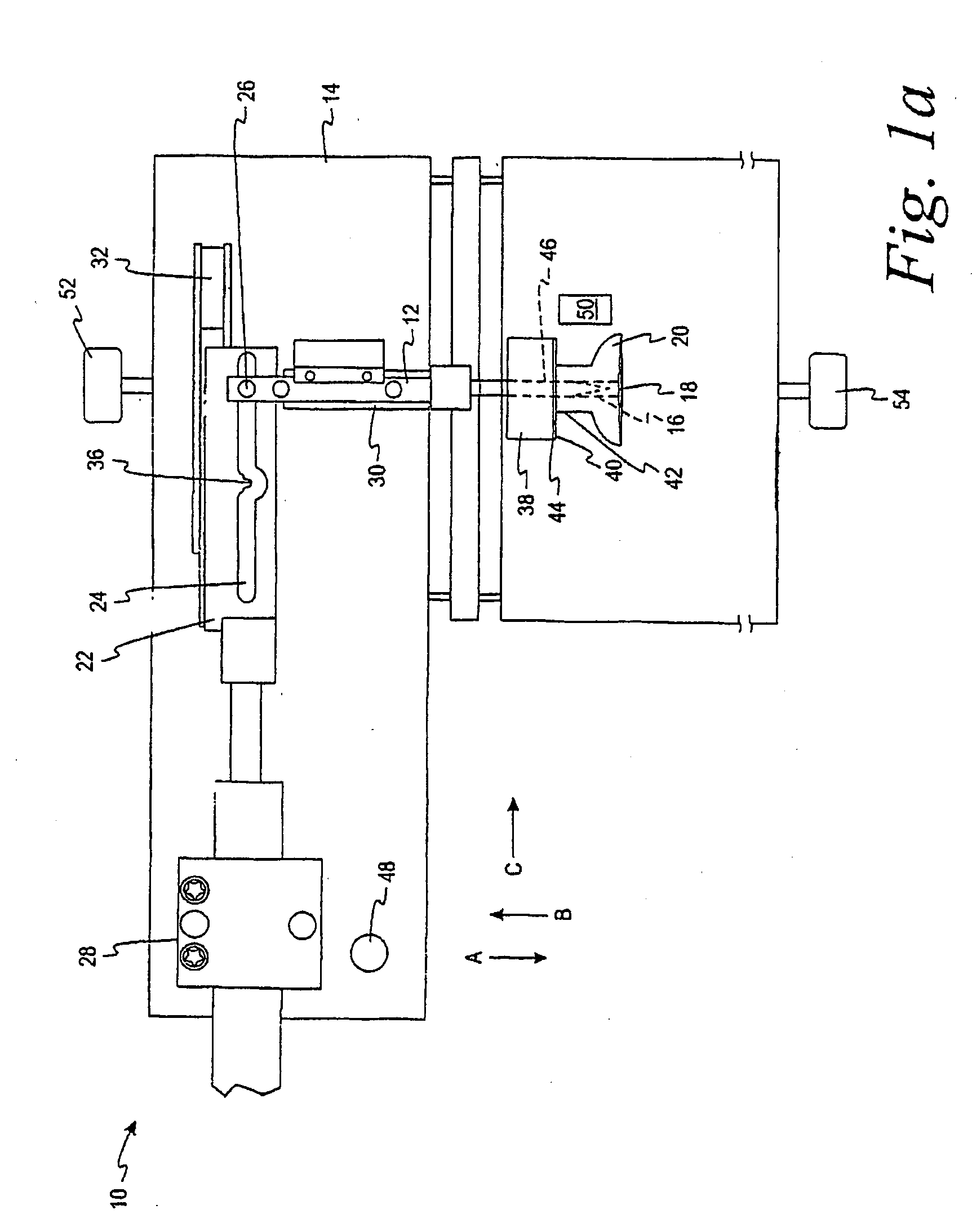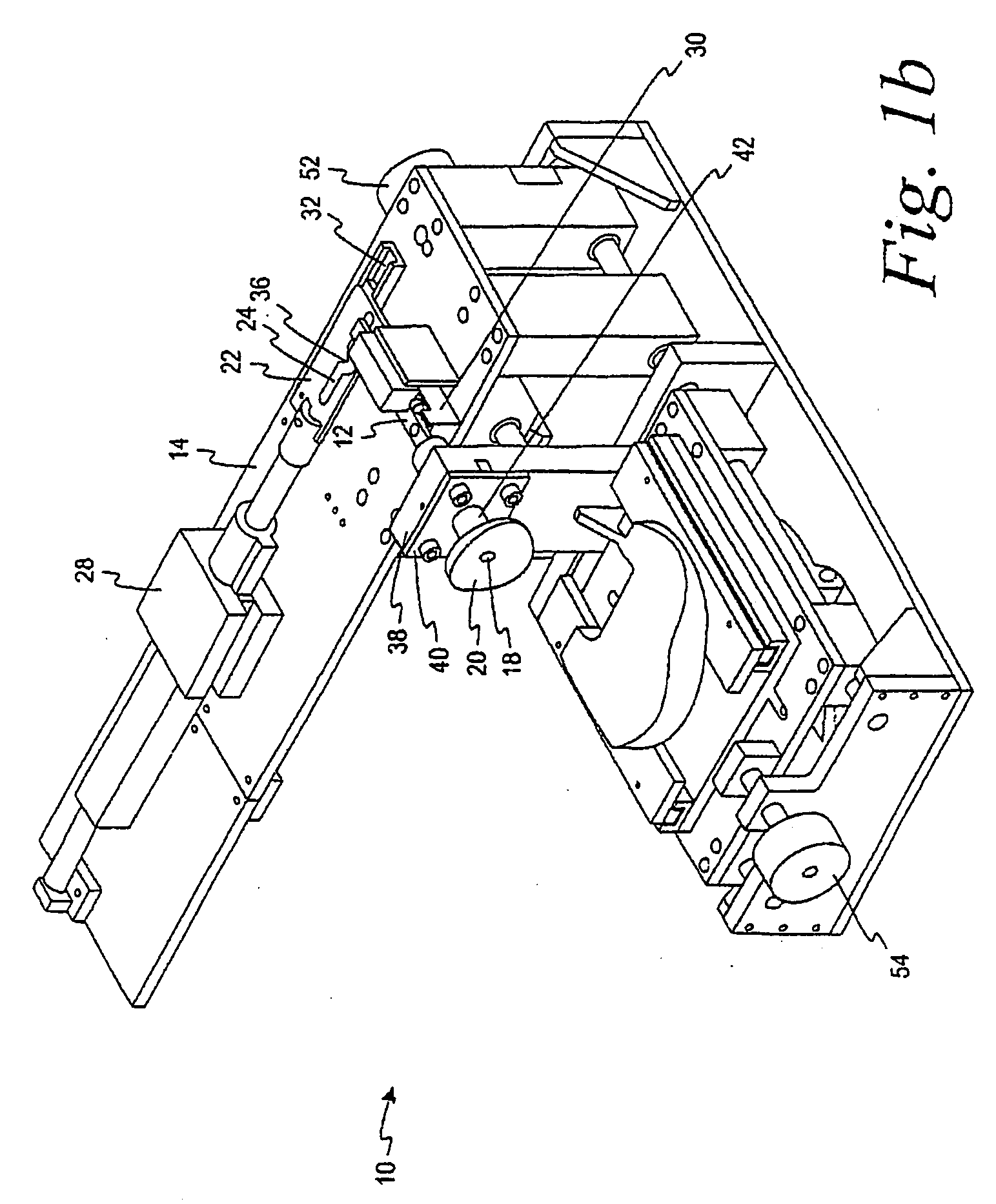Single Puncture Lancing Fixture with Depth Adjustment and Control of Contact Force
a single-point, contact force technology, applied in the field of lancing mechanism, can solve the problems of person passing out, hypoglycemia and hyperglycemia, and failure to take corrective action, and achieve the effects of reducing the risk of death, and reducing the risk of strok
- Summary
- Abstract
- Description
- Claims
- Application Information
AI Technical Summary
Benefits of technology
Problems solved by technology
Method used
Image
Examples
embodiment a
[0038]A lancing mechanism fixture for puncturing skin comprising:
[0039]a lancet disposed on the fixture having a penetration end being adapted to puncture skin, the penetration end being moveable in a direction substantially parallel to a longitudinal axis of the lancet, the penetration end of the lancet being moveable from a first position to a second position during a forward stroke, the penetration end of the lancet being movable from the second position back to the first position during a return stroke;
[0040]a cam mechanism including a slot cam and a cam follower, the cam follower connected to the lancet, the cam follower engaged to the slot cam such that the longitudinal axis of the slot cam is generally perpendicular to the longitudinal axis of the lancet, the slot cam being moveable along its longitudinal axis to move the cam follower and connected lancet a fixed distance; and a drive member connected to the slot cam, the drive member adapted to assist in moving the slot cam....
embodiment b
[0041]The lancing mechanism of Embodiment A further comprising an endcap located along the lancet's travel axis, the endcap positioning a surface of the skin a distance from the penetration end, the endcap including a hole therethrough in which the penetration end passes to puncture the skin surface.
embodiment c
[0042]The lancing mechanism of Embodiment B further including a force registering member connected to the endcap that registers the amount of force applied to the endcap.
PUM
 Login to View More
Login to View More Abstract
Description
Claims
Application Information
 Login to View More
Login to View More - R&D
- Intellectual Property
- Life Sciences
- Materials
- Tech Scout
- Unparalleled Data Quality
- Higher Quality Content
- 60% Fewer Hallucinations
Browse by: Latest US Patents, China's latest patents, Technical Efficacy Thesaurus, Application Domain, Technology Topic, Popular Technical Reports.
© 2025 PatSnap. All rights reserved.Legal|Privacy policy|Modern Slavery Act Transparency Statement|Sitemap|About US| Contact US: help@patsnap.com



